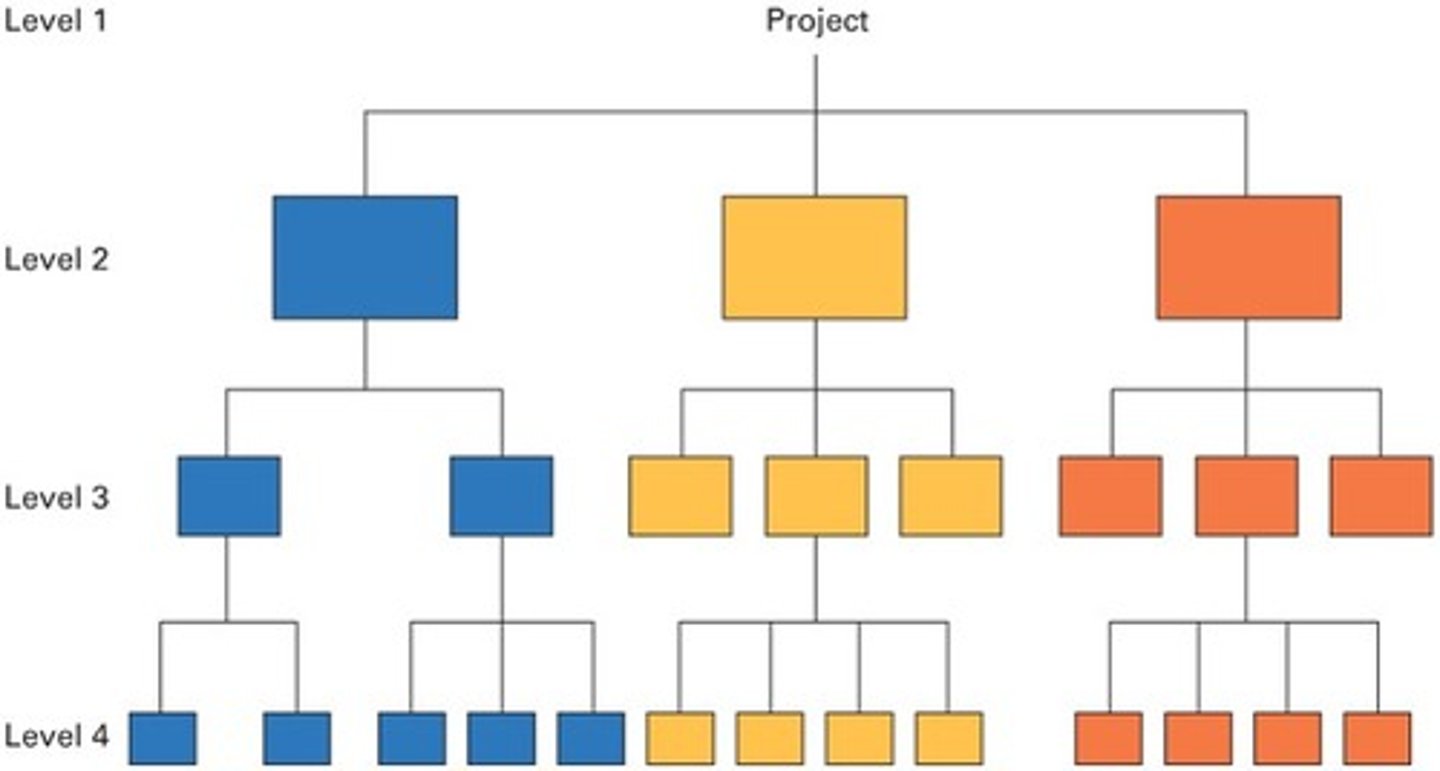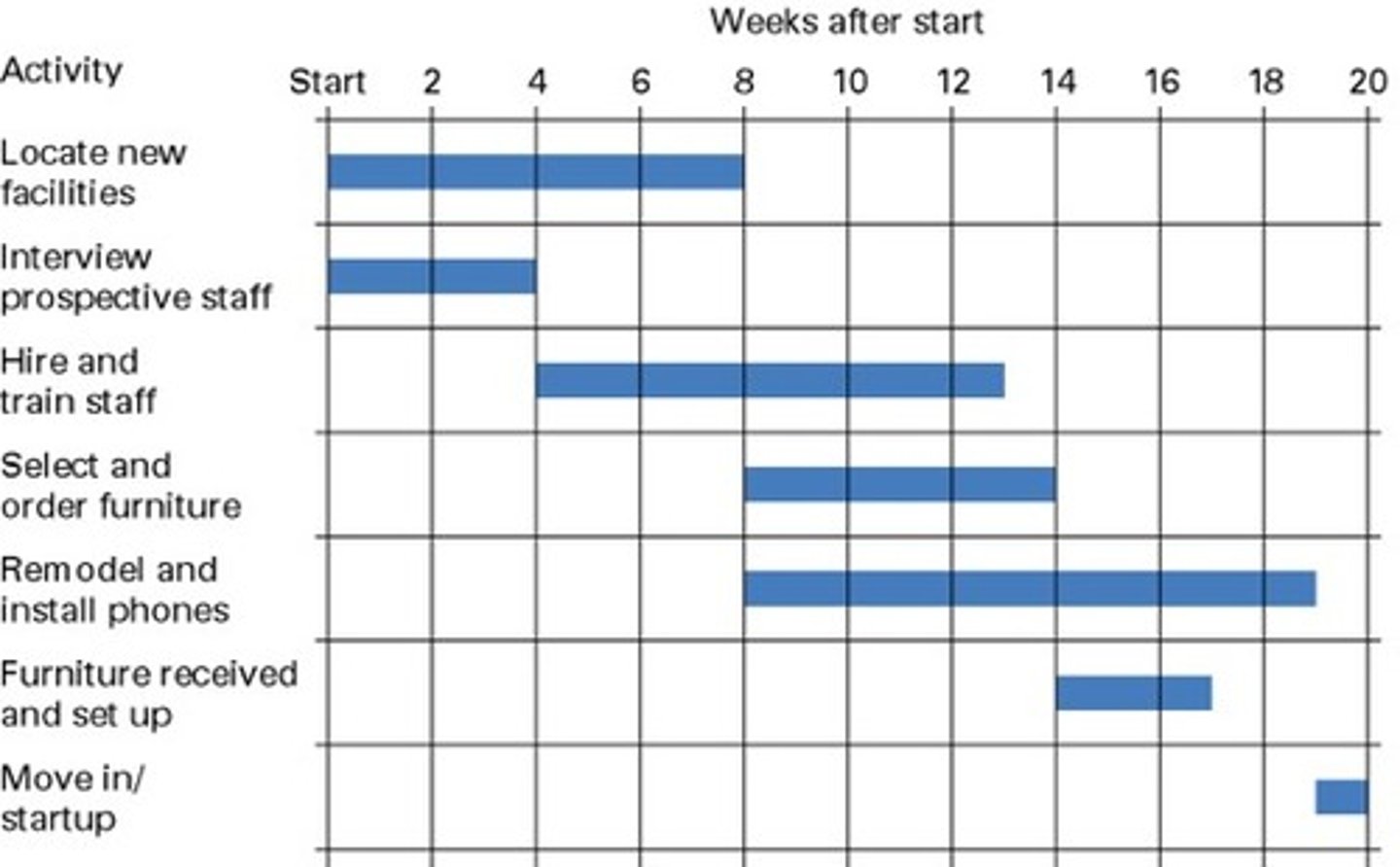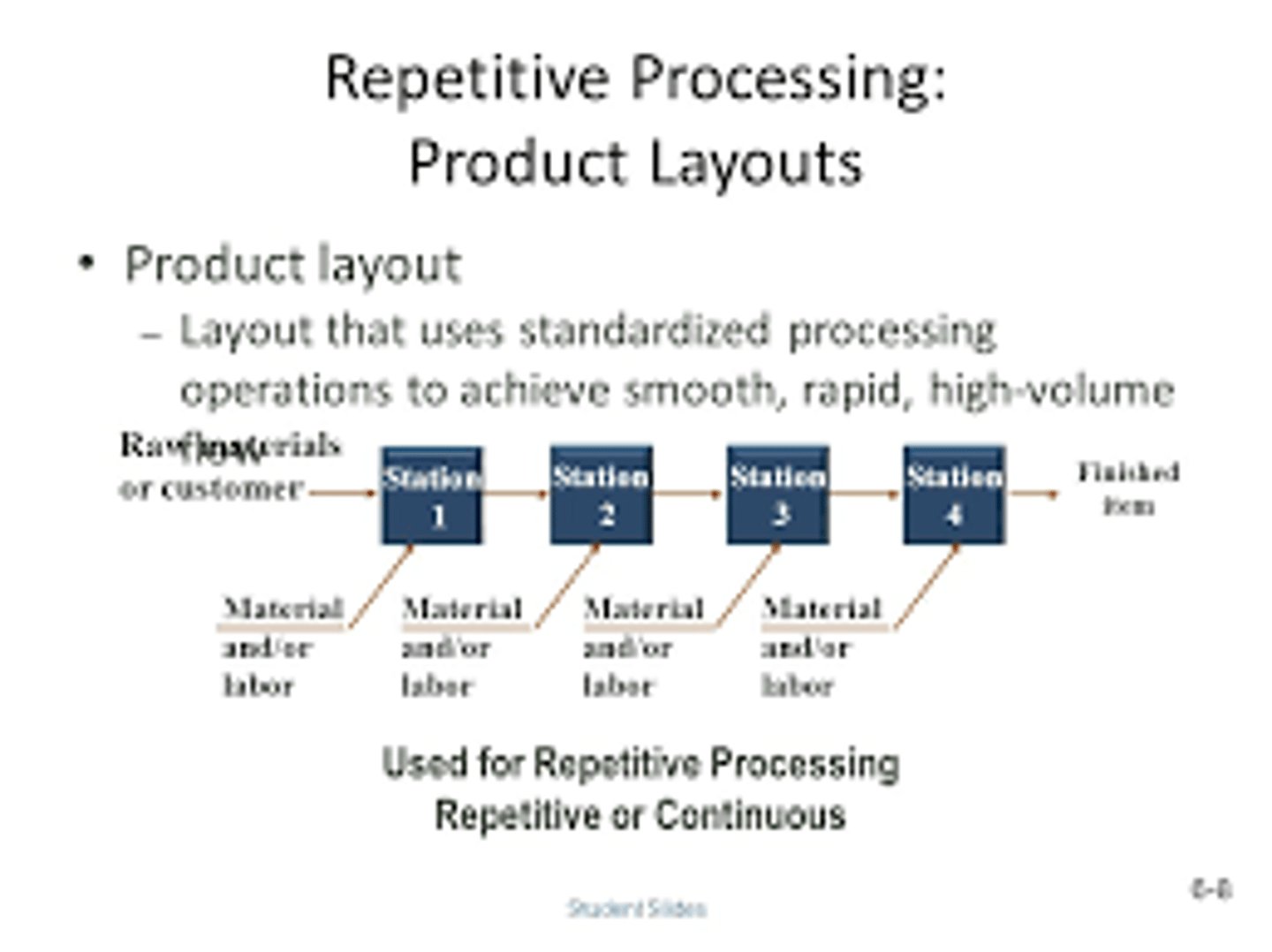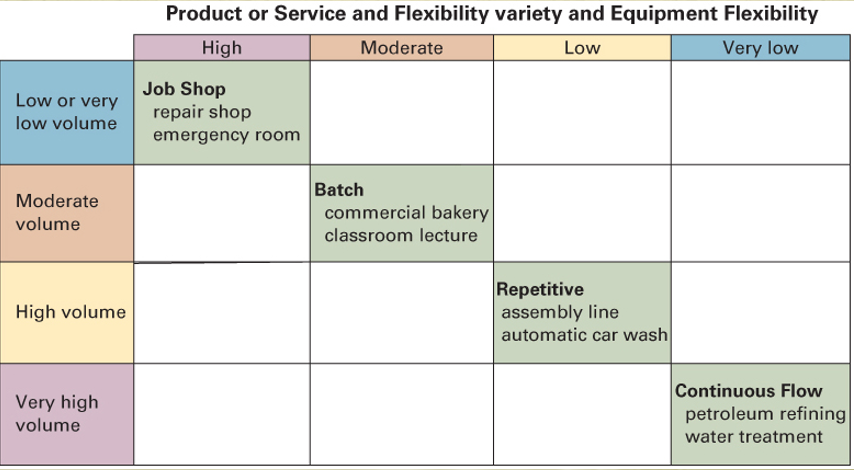OMIS 4300 Exam 2 - Woosley
1/75
There's no tags or description
Looks like no tags are added yet.
Name | Mastery | Learn | Test | Matching | Spaced |
|---|
No study sessions yet.
76 Terms
Capacity planning
The process of determining the production capacity needed by an organization to meet changing demands for its products.
Capacity
The upper limit or ceiling on the load that an operating unit can handle.
Capacity Needs Include?
Equipment
Space
Employee Skills
Strategic capacity planning
The goal to achieve a match between the long-term supply capabilities of an organization and the predicted level of long-term demand.
Design capacity
The maximum output rate or service capacity an operation, process, or facility is designed for.
Effective capacity
Design capacity minus allowances such as personal time, maintenance, and scrap.
Actual output
The rate of output actually achieved; cannot exceed effective capacity.
Determinants of Capacity
- Facilities
- Product and service factors
- Process factors
- Human factors
- Policy factors
- Operational factors
- Supply chain factors
- External factors
Service capacity planning
The planning process that presents challenges related to the need to be near customers and the inability to store services.
Demand management strategies
Strategies used to offset capacity limitations and achieve a closer match between supply and demand.
Outsource
To obtain goods or services from an external supplier rather than producing them internally.
Bottleneck operation
An operation in a sequence whose capacity is lower than that of other operations, slowing the entire process.
Economies of scale
If output rate is less than the optimal level, increasing the output rate results in decreasing average per unit costs
Reasons for economies of scale
Fixed costs spread over more units, decreasing construction costs, and reduced processing costs due to standardization.
Diseconomies of scale
If the output rate is more than the optimal level, increasing the output rate results in increasing average per unit costs
Reasons for diseconomies of scale
Increased distribution costs, complexity, inflexibility, and additional bureaucracy.
Cost-volume analysis
Focuses on the relationship between cost, revenue, and volume of output.
Fixed Costs (FC)
Tend to remain constant regardless of output volume.
Variable Costs (VC)
Vary directly with volume of output.
Break Even Point (BEP)
The volume of output at which total cost and total revenue are equal.
Sensitivity analysis
Determining the range of probability for which an alternative has the best expected payoff.
Projects
Unique, one-time operations designed to accomplish a specific set of objectives in a limited time frame.
Work Breakdown Structure (WBS)
A hierarchical decomposition of the total scope of work to accomplish the project objectives.

Gantt Chart
A visual representation of a project schedule over time.

PERT
Program Evaluation and Review Technique, used for analyzing the tasks involved in completing a project.
Critical Path Method (CPM)
A project management technique used to determine the longest stretch of dependent activities.
Network diagram
Diagram of project activities that shows sequential relationships by use of arrows and nodes.
Activity on Node (AON)
Network convention in which nodes designate activities.
Early Start (ES)
The earliest time an activity can begin, assuming all preceding activities start as early as possible.
Early finish (EF)
The earliest time an activity can finish
Slack
The amount of time that a task can be delayed without delaying the project.
Critical Path
The critical path is indicated by the activities with zero slack.
Activity on Arrow (AOA)
Network diagram convention in which arrows designate activities
Time-cost trade-offs
Activity time estimates are made for some given level of resources
Motivations for project completion
To avoid late penalties, monetary incentives, and free resources for use on other projects
Crashing
Shortening activity durations, typically involving additional funds for personnel or equipment
Crashing decisions
To make decisions concerning crashing requires information about regular and crash time and cost estimates
Critical path activities
Activities that are potential candidates for crashing
Crashing non-critical path activities
Would not have an impact on overall project duration
Crashing procedure
General procedure: Crash the project one period at a time, starting with the least expensive activity on the critical path
Sources of error
Potential sources of error include incomplete project networks and inaccurate time estimates
Project management software advantages
Advantages include imposing methodology, enhancing communication, and generating reports
Process Selection
Refers to deciding on the way production of goods or services will be organized
Process strategy
Key aspects include capital intensity and process flexibility
Capital intensity
The mix of equipment and labor that will be used by the organization
Process flexibility
The degree to which the system can be adjusted to changes in processing requirements
Process choice
Demand driven based on variety and volume
Process selection
Involves substantial investment in equipment and has a very specific influence layout.
Product or service profiling
Linking key product or service requirements to process capabilities.
Key dimensions of profiling
-Range of products or services that will be processed
-expected order sizes
-pricing strategies
-expected frequency of schedule changes
-order-winning requirements
Technology
The application of scientific discoveries to the development and improvement of products and services and/or the processes that produce or provide.
Technological innovation
The discovery and development of new or improved products, services, or processes, for producing or providing them.
Automation
Machinery that has sensing and control devices that enable it to operate automatically.
Programmable automation
Involves the use of high-cost, general-purpose equipment controlled by a computer program that provides both the sequence of operations and specific details about each operation.
Flexible automation
Evolved from programmable automation. It uses equipment that is more customized than that of programmable automation and requires significantly less changeover time.
Facilities layout
The configuration of departments, work centers, and equipment, with particular emphasis on movement of work (customers or materials) through the system.
Needs for layout planning
- Inefficient operations
- Accidents or safety hazards
- Changes in product or service design
- Introduction of new products or services
- Changes in output volume or product mix
- Changes in methods or equipment
- Changes in environmental or other legal requirements
- Morale problems
product layouts
layout that uses standardized processing operations to achieve smooth, rapid, high-volume flow

Advantages of product layouts
-High rate of output
-low unit cost
-labor specialization
-low material handling cost per unit
-high utilization of labor and equipment
-established routing and scheduling
-routine accounting, purchasing and inventory control
Disadvantages of product layouts
-Creates dull, repetitive jobs
-poorly skilled workers may not maintain equipment or quality of output
-fairly inflexible to changes in volume or product or process design
-highly susceptible to shutdowns
-preventive maintenance
-capacity for quick repair and spare-parts inventories are necessary expenses
-individual incentive plans are impractical
Process layouts
Layouts that can handle varied processing requirements.
Advantages of process layouts
-Can handle a variety of processing requirements
-not particularly vulnerable to equipment failures
-general-purpose equipment is often less costly and easier to maintain
-it is possible to use individual incentive systems.
Disadvantages of process layouts
-In-process inventories can be high
-routing and scheduling pose continual challenges
-equipment utilization rates are low
-material handling is slow and inefficient
-reduced spans of supervision
-special attention necessary for each product or customer
accounting
-inventory control
-purchasing are more involved
Fixed-position layout
Layout in which the product or project remains stationary, and workers, materials, and equipment are moved as needed.
Combination layouts
Some operational environments use a combination of the three basic layout types.
Cellular layouts
Layout in which workstations are grouped into a cell that can process items that have similar processing requirements.
Cellular Production
layout in which workstations are grouped into a cell that can process items that have similar processing requirements
Group technology
The grouping into part families of items with similar design or manufacturing characteristics.
Line balancing
The process of assigning tasks to workstations in such a way that the workstations have approximately equal time requirements.
Cycle time
The maximum time allowed at each workstation to complete its set of tasks on a unit; also establishes the output rate of a line.
Precedence diagram
A diagram that shows elemental tasks and their precedence requirements.
Balance delay
Percentage of idle time.

Efficiency
Percentage of busy time of a line.
Cost Volume Analysis Assumptions
One product is involved
Everything produced can be sold
The variable cost per unit is the same regardless of volume
Fixed costs do not change with volume changes, or they are step changes
The revenue per unit is the same regardless of volume
Revenue per unit exceeds variable cost per unit
Product Process Matrix

Process Types
Job Shops, Batches, Repetitive/Assembly, Continuous